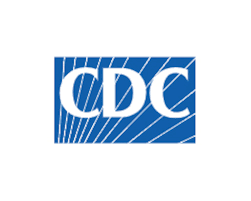The Inflation Reduction Act, passed by Congress and signed by President Biden is helping Arizona’s hospitals and health care centers save money while increasing their energy efficiency and building their own reliable power sources – here’s how:
Renewable Energy Investment Tax Credits
- The basics: Installing renewable energy can reduce dependency on the power grid, increasing the resilience of health care facilities in the face of climate and extreme weather-related risks, such as power outages, while lowering costs during peak usage times. The Inflation Reduction Act greatly expands the existing energy investment tax credits. The section 48 Business Energy Investment Tax Credits range from 6% to 70% of the upfront cost of a “qualifying energy property,” such as solar and wind electricity generation and standalone battery storage projects.
- The details: Starting in 2025, the ITC will change to a more flexible, technology-neutral tax credit for facilities that generate clean electricity. The credit amount depends on the project’s size: larger projects with an output over 1 MW qualify for a 6% credit on installation costs, while smaller projects under 1 MW can receive a 30% credit. Bonus incentives can increase the total credit to as much as 50% to 70% of the project’s upfront costs.
Qualified Commercial Clean Vehicles Credits
- The basics: Healthcare organizations that own vehicle fleets (for patient transportation, delivery of medical supplies, mobile care units, home health services, etc.) can use the section 45W Qualified Commercial Clean Vehicle Credit to lower their total cost of ownership. The credit can only be applied toward qualified commercial clean vehicles (electric, hybrid, etc.).
- The details: The value of this credit tops out at $7,500 for vehicles that weigh less than 14,000 pounds or $40,000 for vehicles whose weight exceeds 14,000 pounds. However, there are no limits to the number of credits that can be applied. Non-profit hospital systems are eligible to receive the value of this credit as a direct payment. For-profit hospital systems can only monetize the value of this incentive by using it as a tax credit.
Alternative Fuel Vehicle Refueling Property Credits
- The basics: Investing in alternative fuel vehicle refueling stations, such as electric car charging stations, offers healthcare organizations a practical way to cut costs by reducing reliance on traditional gasoline or diesel fuels. The Section 30C Alternative Fuel Vehicle Refueling Property Credit helps cover the cost of these installations, making the transition to clean transportation more affordable.
- The details: For non-profit hospitals, the credit allows for a direct payment, while for-profit hospitals can choose to transfer the credit for cash. The credit applies to refueling and charging stations in eligible areas, including low-income and non-urban regions. The base credit is 6% of the eligible installation costs, with the potential to increase to 30% if the installation meets certain prevailing wage and apprenticeship requirements. The credit is capped at $100,000 per property, providing significant financial support to healthcare organizations transitioning to clean transportation.
Energy-efficient Commercial Building Deduction
- The basics: Energy-efficient updates in hospitals improve patient comfort by providing consistent temperatures, better air quality, and reliable systems. These upgrades also lower operating costs, allowing more resources to be directed toward patient care and enhancing overall health outcomes. The Inflation Reduction Act has enhanced the Section 179D Energy Efficient Commercial Buildings Deduction.
- The details: Section 179D provides tax deductions for improvements to interior lighting, heating, cooling, ventilation, hot water systems, and the building’s envelope—essentially, anything that separates the inside of the building from the outside, like roofs, doors, windows, floors, and walls. The maximum deduction has been increased to $5.00 per square foot, with adjustments for inflation, if certain wage and apprenticeship standards are met.
The IRA also removed the restriction that limited the deduction to a single use over a building’s lifetime. Now, tax-exempt entities can transfer the deduction to design professionals who can then monetize it.
Renewable Energy Production Tax Credit
Renewable energy production allows healthcare facilities to contribute back to the community. The Section 45 Renewable Energy Production Tax Credit supports healthcare organizations that produce some of their electricity from renewable sources by offering a 10-year tax credit. This credit ranges from 0.3 to 1.5 cents per kilowatt-hour (kWh) for electricity generated from renewable resources and sold to an unrelated party after the facility is operational.
Taking Action!
By using these incentives, Arizona hospitals can build more resilient and reliable facilities. With energy costs on the rise and extreme weather becoming more common, these investments are not just about saving money—they’re about ensuring that healthcare centers can continue to serve the community, no matter the circumstances.
For more details on these incentives, you can check out the following resources:
- The Office of Climate Change and Health Equity (OCCHE) Quickfinder for Leveraging the Inflation Reduction Act for the Health Sector
- Treasury Announces Guidance on Inflation Reduction Act’s Strong Labor Protections
- IRS:
By taking advantage of the IRA, Arizona’s hospitals can enhance their energy resilience, cut costs, and continue providing essential care to our communities—rain or shine!

